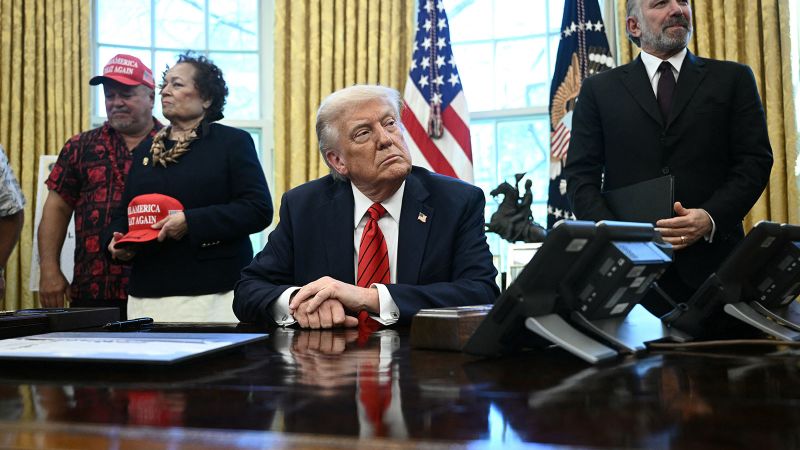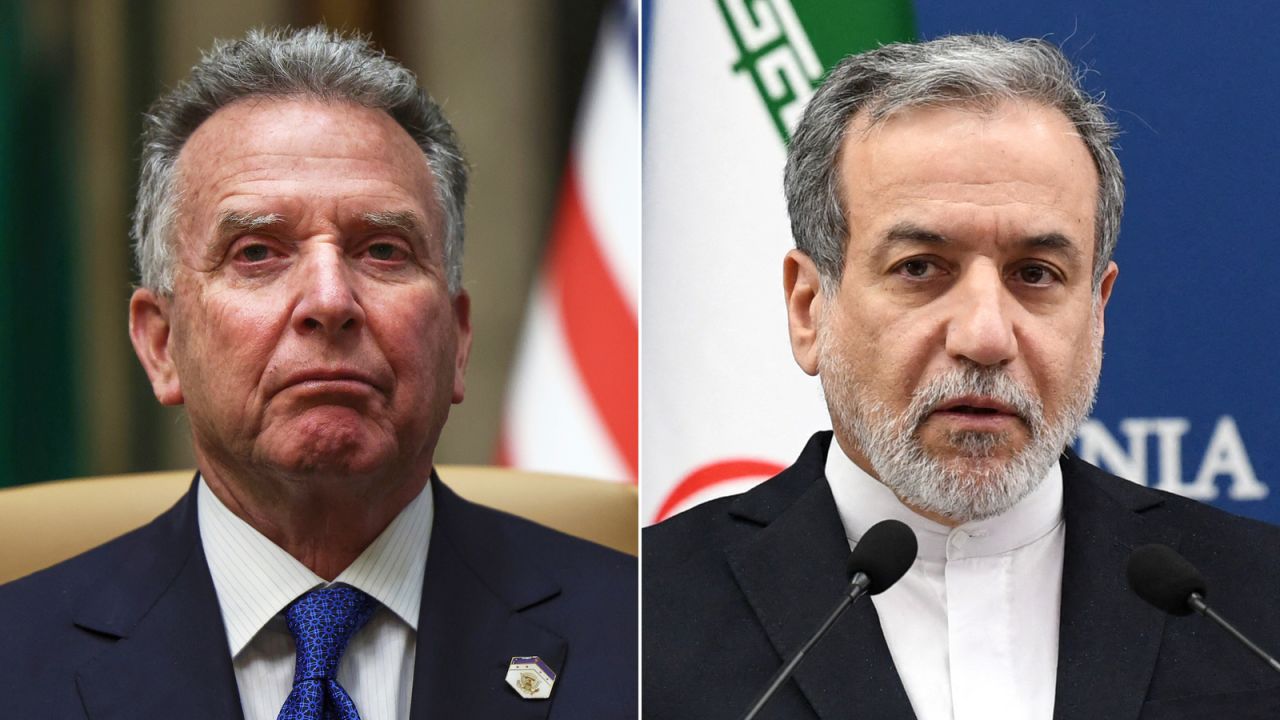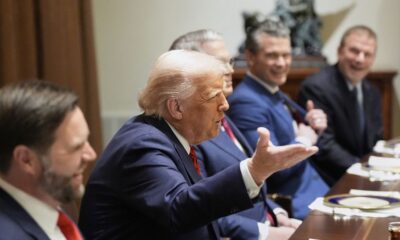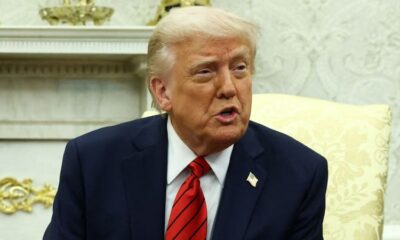Kyiv, Ukraine
CNN
—
“Hi, Mom. All good. I will be offline, probably for a long time, maybe a week or month. Don’t worry.”
That was the last message Nazar Ocheretnyi sent his mother, on March 30, 2022. Nearly three years later, he still hasn’t been in touch. The Ukrainian combat medic disappeared aged 33 in Mariupol, the eastern Ukrainian city that was then under siege in one of the bloodiest chapters in the Russian war against Ukraine.
On April 12, 2022, Ocheretnyi’s mother, Valentyna Ocheretnaya, was officially informed that her son was missing in action, “possibly captured.” Despite his 61-year-old mother’s tireless search, as of March 2025 he remains neither confirmed dead nor known to be alive.
Ocheretnyi is one of the almost 60,000 military personnel and civilians recognized as missing under special circumstances in the government’s Unified Register. However, the real number could be much higher.
“If the person is in the register – there are two main versions – the person either is in Russian captivity, or the person is dead,” said Artur Dobroserdov, Commissioner for Persons Missing under Special Circumstances.
But the longer the war continues, the more difficult it is for the Ukrainian government to find those who were captured or killed.

The way the war is fought has also changed since 2022. Both armies now use drones extensively, so returning bodies from the front lines is increasingly difficult – which is why Russia and Ukraine regularly exchange bodies. Ukraine has managed to bring home more than 7,000 bodies since Russia launched its full-scale invasion of Ukraine in February 2022.
“All military units know that they have to take the bodies of both our defenders and the enemy. If taken, the enemy’s body is an asset for the ‘exchange fund’ to be used in (a) repatriation procedure,” said Dobroserdov.
Mandatory DNA testing
During the last such repatriation, on February 14, Ukraine brought home the bodies of 757 fallen soldiers. But for their relatives, that still wasn’t the moment when they could finally bury their beloved according to Ukrainian traditions.
“I will tell you the bitter truth. You still have to be lucky to find your loved one and bury them,” says a comment on social media in a discussion about soldiers who are missing in action.
Identifying missing persons among repatriated remains is a long and complex process. Often, what’s returned is just remnants of bodies, Dobroserdov said – mutilated, fragmented, rotted or burnt.
“The most difficult for an expert is when one package arrives and it contains a large number of body fragments. When you open it, you don’t understand whether it belongs to one person or 10 to 20,” said Ruslan Abbasov, deputy director of the State Scientific Research Forensic Center.

Experts say that sometimes, but not often, bodies are brought back with indications of their identity. This information needs to be cross-checked, however. There have been cases where a name was assigned to a body but, after DNA testing, it turned out to be that of a completely different person.
Even if relatives recognize a fallen soldier, DNA testing is still mandatory for final identification. This is particularly essential in repatriation exchanges, said Dobroserdov, where the returned remains can belong to multiple people.
“We take a DNA sample from each body part and create a DNA profile. We release the body only after we have examined everyone from this repatriation. Because you can’t make an identification order, bury a person, and then find some more remains after a while,” explained Dobroserdov, adding that there were cases in which the remains of one body were delivered during different repatriations at different times.
In cases where the missing person has no relatives, experts also analyze the belongings they left behind – specifically items that have been in direct contact with their skin – in order to search for a DNA match.
To speed up the search, the Ukrainian authorities are turning to advanced technologies. On February 20, the National Police of Ukraine posted computer-generated images on social media of five unidentified men who were killed in action.
“If you recognize any of your relatives or friends who went missing because of the war or know people who are looking for them, please contact us,” said the message.
It was the first time that Ukrainians had made use of 3D-reconstruction techniques for this purpose.
“We are testing the technology for restoring facial features of unidentified bodies based on the shape of the skull and available genomic information,” Khrystyna Podyriako, head of the National Police’s war crimes investigation department, told CNN.
This allows the restoration of distinguishing features such as hair and skin color, face shape, and approximate age.
Ukrainians also use facial recognition software provided by Western partners and conduct searches in databases, social media, and online. One tool employed is the Clearview AI application, which allows users to recognize faces from photos posted on social networks and has enabled researchers to identify missing soldiers who are in captivity.
According to Dobroserdov, Russia does not always keep accurate lists of prisoners of war, which means that the Ukrainians must find and confirm the identities of many of those held captive.
CNN was granted rare access to one of the facial identification facilities in Kyiv, where a team of four people hunts for images of any captured soldier who appears on Russian Telegram channels or media, and tries to identify them. Such work requires special attention to detail; dozens of soldiers’ photos are on computer screens. If the team finds a match, it will notify the soldier’s family that their loved one is likely in captivity.

In support of the government efforts, Ukrainians unite into so-called “armies of families,” searching across Russian TV channels, social media and news videos for signs of the missing.
Families often also conduct their own investigations. Ocheretnaya obtained information from at least three different people that her son, the combat medic, had been seen in captivity in Russia.
“Everything matches what the eyewitnesses are saying. They recognized him from his photo, his callsign, told me where and what kind of tattoo he had. One guy said Nazar for two weeks gave him bandages on his arm after the Russians burned a tattoo of a Ukrainian emblem on his body,” Ocheretnaya said.
She learned of three locations where Ocheretnyi had likely been seen: in Russia’s Volgograd and Sakha regions, and in Olenivka prison in Russian-occupied Donetsk region. She gave all the information she’d gathered to Ukrainian authorities and the International Committee of the Red Cross. But her son is not on any official Russian list.

Ocheretnaya also provided her DNA, but the database has found no match. “It means that he is alive; I know it. Maybe he’s in a prison where they haven’t released the prisoners yet, so his name’s nowhere to be found,” she said.
Over the past three years, Ocheretnaya has attended many meetings held by relatives of those missing in action and joined almost every Telegram group where they talk. She’s contacted everyone from Ocheretnyi’s brigade, and is still searching for him everywhere.
“I have an old video with him in which he is driving, joking, and laughing with other guys. I watch this video several times per day. I know every second, every turn of the eye, every wave of the hand,” said Ocheretnaya.
Ukrainian President Volodymyr Zelensky has repeatedly said that Ukraine is ready for an “all-for-all” exchange. Russia releasing all the Ukrainian captives it holds would be a good step toward peace.
That is exactly what Ocheretnaya, like thousands of other Ukrainian families, is waiting for.
“I’m really asking God to bring my son back to me. I don’t need anything else. Just to bring him back,” she said.























